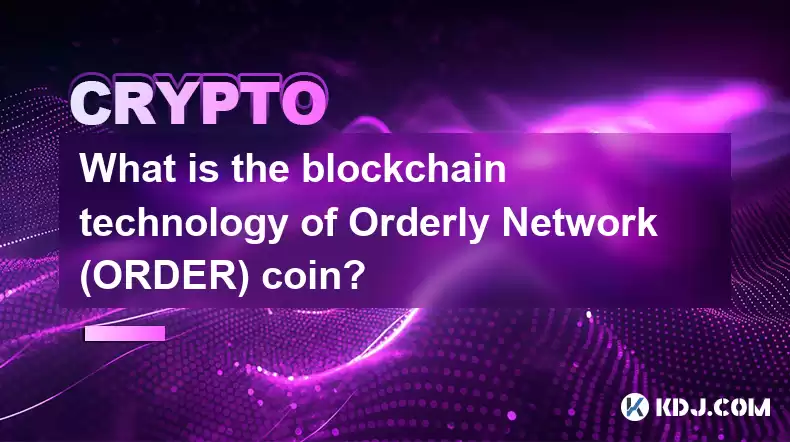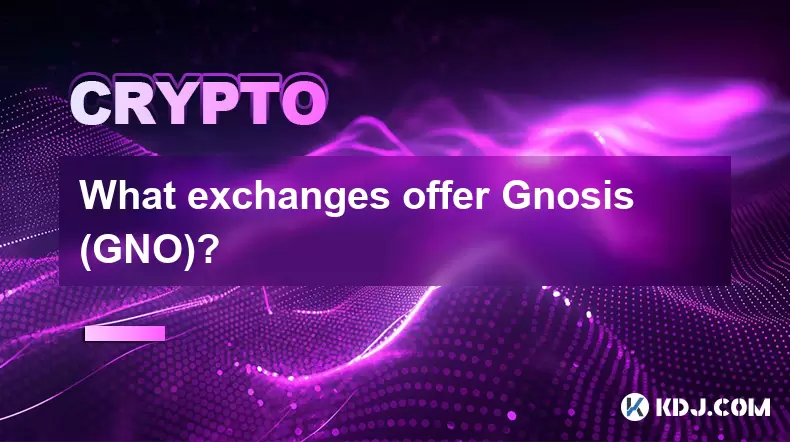-
 Bitcoin
Bitcoin $119000
-2.21% -
 Ethereum
Ethereum $4315
1.01% -
 XRP
XRP $3.151
-3.11% -
 Tether USDt
Tether USDt $0.0000
0.00% -
 BNB
BNB $808.5
-0.71% -
 Solana
Solana $175.8
-4.21% -
 USDC
USDC $0.9999
0.00% -
 Dogecoin
Dogecoin $0.2250
-3.92% -
 TRON
TRON $0.3469
1.77% -
 Cardano
Cardano $0.7818
-3.81% -
 Chainlink
Chainlink $21.47
-2.10% -
 Hyperliquid
Hyperliquid $43.30
-6.81% -
 Stellar
Stellar $0.4370
-2.84% -
 Sui
Sui $3.682
-4.40% -
 Bitcoin Cash
Bitcoin Cash $590.8
2.67% -
 Hedera
Hedera $0.2484
-5.20% -
 Ethena USDe
Ethena USDe $1.001
0.00% -
 Avalanche
Avalanche $23.10
-4.29% -
 Litecoin
Litecoin $119.2
-3.96% -
 Toncoin
Toncoin $3.409
0.90% -
 UNUS SED LEO
UNUS SED LEO $9.016
-1.29% -
 Shiba Inu
Shiba Inu $0.00001304
-3.82% -
 Uniswap
Uniswap $11.18
1.33% -
 Polkadot
Polkadot $3.913
-3.51% -
 Cronos
Cronos $0.1672
-3.08% -
 Dai
Dai $1.000
0.02% -
 Ethena
Ethena $0.7899
-4.70% -
 Bitget Token
Bitget Token $4.400
-1.23% -
 Pepe
Pepe $0.00001132
-5.93% -
 Monero
Monero $257.9
-6.44%
What is the blockchain technology of Orderly Network (ORDER) coin?
The distributed ledger technology at the core of Orderly Network (ORDER) provides a decentralized, tamper-proof, and transparent digital ledger for efficient data management.
Jan 01, 2025 at 03:38 am

Key Points
- Understanding the Distributed Ledger Technology (DLT) Foundation of Orderly Network (ORDER)
- Exploring the Components of the ORDER DLT
- Examining the Consensus Mechanism and Tokenomics of ORDER
- Analyzing the Purpose and Applications of ORDER
- Investigating the Advantages and Limitations of ORDER's Blockchain Technology
- Comparing ORDER's Technology with Alternative DLT Platforms
- Additional Information and Resources on ORDER's Blockchain
Understanding the Distributed Ledger Technology (DLT) Foundation of Orderly Network (ORDER)
Orderly Network (ORDER) is underpinned by distributed ledger technology (DLT), a revolutionary paradigm shift in data management and transaction processing. DLT creates a decentralized, immutable, and transparent digital ledger shared across a network of computers. Each node maintains a complete copy of the ledger, ensuring data integrity and eliminating single points of failure. This distributed architecture provides several prominent benefits:
- Decentralization: Data is not stored centrally, making it immune to censorship, manipulation, or malicious attacks.
- Immutability: Once a transaction is recorded on the ledger, it becomes irreversible, preventing unauthorized alterations or data tampering.
- Transparency: All transactions are visible to all network participants, promoting accountability, traceability, and trust.
Exploring the Components of the ORDER DLT
The ORDER DLT comprises several interoperable components that orchestrate its functionality:
- Nodes: Individual computers or servers that maintain a full copy of the ledger and participate in consensus and transaction validation.
- Consensus Mechanism: A decentralized algorithm that ensures all nodes agree on the validity of transactions and the current state of the ledger. ORDER employs a Practical Byzantine Fault Tolerance (PBFT) consensus, known for its efficiency and fault tolerance.
- Smart Contracts: Autonomous programs that execute predefined agreements when certain conditions are met, automating complex processes and enhancing trust.
- Tokenomics: The economic model that governs the creation, distribution, and use of the ORDER token, which serves as a medium of exchange, payment for services, and governance.
Examining the Consensus Mechanism and Tokenomics of ORDER
The PBFT consensus mechanism plays a pivotal role in maintaining the integrity and reliability of the ORDER DLT. This consensus protocol ensures that all nodes reach agreement on the validity of transactions and the current state of the ledger. The PBFT algorithm is preferred due to its:
- High Transaction Throughput: Enables ORDER to process a significant number of transactions quickly and efficiently.
- Fault Tolerance: Can tolerate malicious behavior from a limited number of nodes, ensuring network stability and data integrity.
The ORDER tokenomics model incentivizes network participation and aligns stakeholder interests:
- Transaction Fees: Users pay transaction fees to cover the computational and storage costs associated with processing transactions on the network.
- Staking Rewards: Node operators who stake their ORDER tokens earn rewards for maintaining the network and validating transactions.
- Governance: Token holders can participate in decision-making and influence the future development of the ORDER ecosystem through proposals and voting.
Analyzing the Purpose and Applications of ORDER
The primary purpose of ORDER's blockchain technology is to provide a secure, transparent, and efficient platform for managing and processing data:
- Supply Chain Management: Enhancing supply chain visibility, tracking goods, and ensuring product authenticity.
- Digital Identity: Enabling secure and verifiable digital identities for online interactions and access to services.
- Financial Services: Automating financial transactions, reducing costs, and improving transparency.
- Healthcare: Securing patient data, facilitating data sharing among healthcare providers, and enabling new health
Disclaimer:info@kdj.com
The information provided is not trading advice. kdj.com does not assume any responsibility for any investments made based on the information provided in this article. Cryptocurrencies are highly volatile and it is highly recommended that you invest with caution after thorough research!
If you believe that the content used on this website infringes your copyright, please contact us immediately (info@kdj.com) and we will delete it promptly.
- PumpFun (PUMP) Price: Riding the Meme Coin Wave or Facing a Wipeout?
- 2025-08-12 16:50:12
- Arctic Pablo Coin: Meme Coin Growth Redefined?
- 2025-08-12 16:50:12
- Ether ETFs Surge: Inflows and Bull Signs Point to $4K ETH?
- 2025-08-12 16:30:12
- Bitcoin, Crypto Market, and CPI Anticipation: A New York Minute on Volatility
- 2025-08-12 16:30:12
- Bitcoin, CPI, and Market Fears: Navigating the Crypto Landscape
- 2025-08-12 15:10:13
- BTC Traders Eye ETH Targets as CPI Looms: A New York Minute
- 2025-08-12 15:10:13
Related knowledge

How to purchase Aragon (ANT)?
Aug 09,2025 at 11:56pm
Understanding Aragon (ANT) and Its PurposeAragon (ANT) is a decentralized governance token that powers the Aragon Network, a platform built on the Eth...

Where to trade Band Protocol (BAND)?
Aug 10,2025 at 11:36pm
Understanding the Role of Private Keys in Cryptocurrency WalletsIn the world of cryptocurrency, a private key is one of the most critical components o...

What is the most secure way to buy Ocean Protocol (OCEAN)?
Aug 10,2025 at 01:01pm
Understanding Ocean Protocol (OCEAN) and Its EcosystemOcean Protocol (OCEAN) is a decentralized data exchange platform built on blockchain technology,...

Where can I buy UMA (UMA)?
Aug 07,2025 at 06:42pm
Understanding UMA and Its Role in Decentralized FinanceUMA (Universal Market Access) is an Ethereum-based decentralized finance (DeFi) protocol design...

What exchanges offer Gnosis (GNO)?
Aug 12,2025 at 12:42pm
Overview of Gnosis (GNO) and Its Role in the Crypto EcosystemGnosis (GNO) is a decentralized prediction market platform built on the Ethereum blockcha...

How to buy Storj (STORJ) tokens?
Aug 09,2025 at 07:28am
Understanding Storj (STORJ) and Its Role in Decentralized StorageStorj is a decentralized cloud storage platform that leverages blockchain technology ...

How to purchase Aragon (ANT)?
Aug 09,2025 at 11:56pm
Understanding Aragon (ANT) and Its PurposeAragon (ANT) is a decentralized governance token that powers the Aragon Network, a platform built on the Eth...

Where to trade Band Protocol (BAND)?
Aug 10,2025 at 11:36pm
Understanding the Role of Private Keys in Cryptocurrency WalletsIn the world of cryptocurrency, a private key is one of the most critical components o...

What is the most secure way to buy Ocean Protocol (OCEAN)?
Aug 10,2025 at 01:01pm
Understanding Ocean Protocol (OCEAN) and Its EcosystemOcean Protocol (OCEAN) is a decentralized data exchange platform built on blockchain technology,...

Where can I buy UMA (UMA)?
Aug 07,2025 at 06:42pm
Understanding UMA and Its Role in Decentralized FinanceUMA (Universal Market Access) is an Ethereum-based decentralized finance (DeFi) protocol design...

What exchanges offer Gnosis (GNO)?
Aug 12,2025 at 12:42pm
Overview of Gnosis (GNO) and Its Role in the Crypto EcosystemGnosis (GNO) is a decentralized prediction market platform built on the Ethereum blockcha...

How to buy Storj (STORJ) tokens?
Aug 09,2025 at 07:28am
Understanding Storj (STORJ) and Its Role in Decentralized StorageStorj is a decentralized cloud storage platform that leverages blockchain technology ...
See all articles

























































































